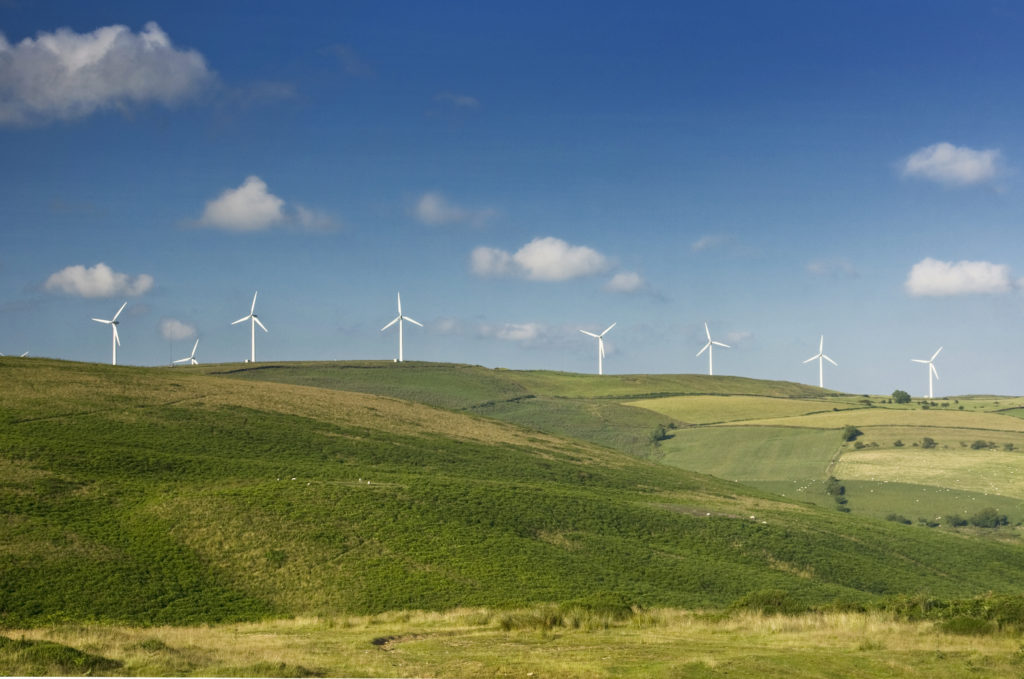
The recent report by the UN Intergovernmental Panel on Climate Change (IPCC) warned clearly that the world now has little more than 12 years in which to limit global average temperature to a maximum of 1.5ºC. At present, the government target for countering climate change is an 80 percent emissions reduction by 2050, although The Climate Change Committee (CCC) recently called on the government to move faster on its targets. UK Energy and Climate Minister Claire Perry responded that the government will exclude those budgets that have already been set, which means, in effect, that it will not take any additional action on climate change before 2032. Meanwhile, Labour has committed to a net-zero target by 2050 and a letter signed by 130 MPs has called on the government to set the same target.
If this sounds rather negative, the overall picture is encouraging. The really good news is that UK renewable energy capacity has now overtaken fossil fuels for the first time, Figures published by the government show that renewable energy capacity reached 42.2 GW by the end of Q2 2018. This represents a 10 percent increase (3.9 GW) on the same period in 2017 and a 1.4 percent (0.6 GW) increase on the previous quarter. Over half of the annual increase was provided by offshore wind.
In essence, a third of Britain’s coal, gas and oil capacity has now been retired, while the capacity of renewable has tripled. Amounting to 42 GW (compared to 41.2 GW for fossil fuels), renewables now dominate the UK’s electricity generation infrastructure. Wind power has the largest installed capacity, at 20 GW, followed by solar and biomass.
“We need more policy and more challenging targets to enable us to get there, although if we need to the industry can deliver without support, it is just a lot harder” says Sonya Bedford, Head of Energy at Stephens-Scown LLP. “The movement is being driven locally with people trying to move things forward in their cities, towns and villages and through their own local authorities the Committee on Climate Change report on the Clean Growth Strategy (CCC January 2018 p24) shows what legislation and targets there needs to be. It is not as if they don’t have evidence in a number of places now.
Writing in The Guardian in March this year, Adam Vaughan predicted that increasing amounts of renewable energy in the UK will largely kill off opportunities for new gas power plants. Vaughan pointed out that the government has already reduced its expectations of UK gas capacity in 2030 from 22 GW to 7 GW. The recent study by Aurora Energy argues that this figure could be lower still, reaching 1 GW if subsidy-free renewable energy really took off in the country.
With regard to emissions reduction, according to the Department for Business, Energy and Industrial Strategy (BEIS), UK emissions were 43 percent below 1990 levels in 2017. CCC states that the UK is currently on track to outperform the governments third (2018-22) carbon budget, but not the fourth (2023-27). Carbon Brief commented earlier in the year that UK emissions are now on a par with emissions last seen in 1890. However, James Murray, Editor of Business Green has pointed out that much of this momentum was achieved by the Coalition Government, through its support for renewables via Contracts for Difference (CfD) and carbon floor prices and that since 2015 the Conservative Government has reined in decarbonisation policies by shutting renewables out of CfD auctions and cutting support for small-scale renewables.
The recent announcement by Claire Perry regarding the subsidy arrangements for offshore wind appear to support that view, given that some in the sector, along with Greenpeace, have described the £60 million allocated to offshore wind in the forthcoming CfD auction as ‘pitiful’. However, other organisations, such as the Aberdeen Renewable Energy Group and Scottish Renewables, have welcomed Ms Perry’s announcement, viewing it as a huge opportunity for the Scottish economy and supply chain in particular, while BEIS responded by stating that the fall in costs for renewables actually means that the UK will be able to secure more generation than from the previous auction and at lower cost.
So what is Stephens Scown doing to support action against climate change in the UK?
“We support our clients in building out the energy landscape of the future that we need now” says Sonya, “we support them in finding new ways of deploying renewable energy from initial site planning and development, through to grid contracts, construction contracts, equipment technical specifications, funding and eventual sale of the energy generated. We find solutions to enable these projects to be built. We are working with community energy groups, developers and local authorities and creating change through our contracts. We’ve stuck our colours to the renewables mast and are going to stay there”.
To find out more about the work of the energy team visit the energy section of the website.
